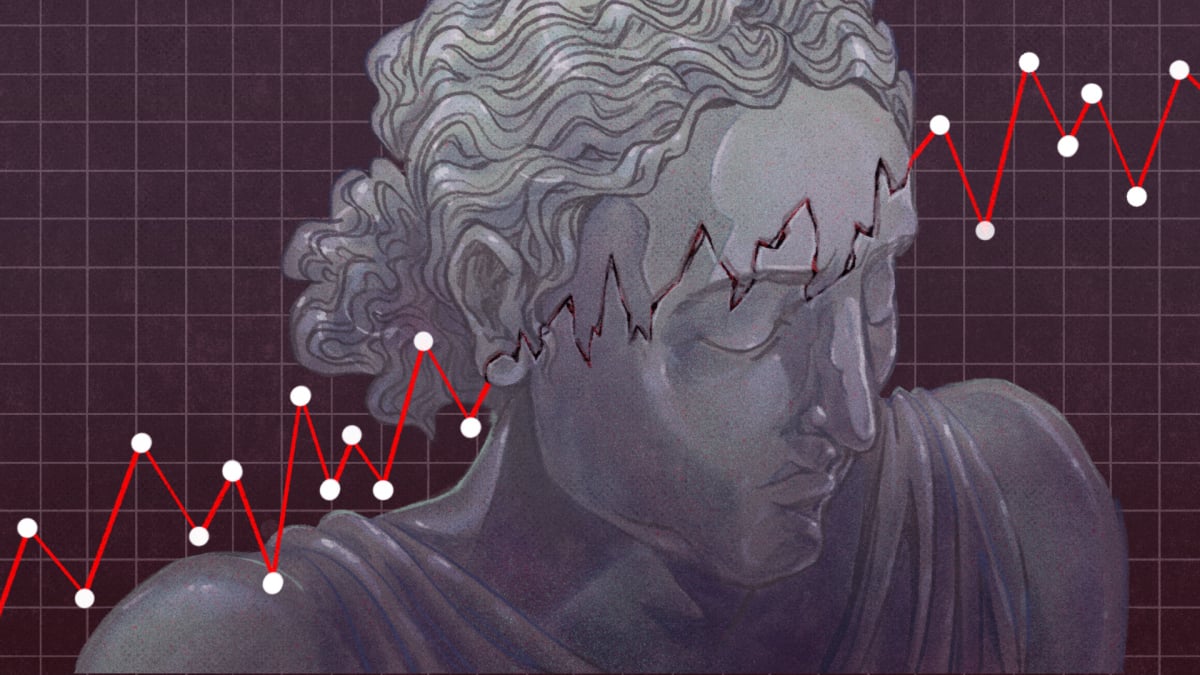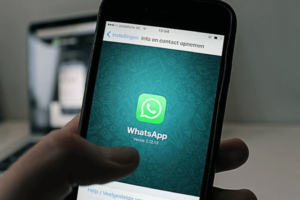Originally published on https://mashable.com/article/oura-ring-stress

Oura recently released a new feature for its popular sleep-tracking Gen3 ring: the ability to see trends in daytime stress.
Not long after, an intriguing thread popped up in a subreddit dedicated to the Oura ring. Some of its 40,000 members were perplexed by what the Oura app reported about their stress levels.
Much to their surprise, the commenters said it seemed that they were always stressed. Some wondered if the new feature was buggy. But others didn’t like how the data made them feel, hinting at the unintended mental health implications of tracking.
“I’m stressed eight hours a day since this new feature has rolled out which is making me stressed,” wrote one commenter. “How do I shut it off!”
The conversation pointed to a persistent tension undergirding efforts to track, or even surveil, your own health around the clock. Such data can empower the user, but it can also sew doubt and worry — perhaps where there wasn’t any before.
Dr. Vaile Wright, a psychologist and senior director of health care innovation for the American Psychological Association, said these different outcomes depend on the person.
“For some, tracking provides a critical ability to recognize and identify triggers,” Wright said. “For others, however, it could actually increase stress, distress, and hypervigilance.”
The former group might have difficulty pinpointing what stresses them most or how they feel in that state. Cultivating a greater awareness of that can be useful, because it might encourage them to make proactive changes, like implementing meditation or exercise breaks when their stress spikes. But the latter group might constantly think about their stress, even ruminate on it, and inadvertently engage in a self-fulfilling prophecy.
When a person thinks they’re stressed all the time, they may expect that to be the case and then behave in ways that increase stress, like procrastinating, taking anger or frustration out on others, and staying constantly connected to digital devices, the news, and social media.
The challenge is that you may not know how you’ll respond until you’re staring at days of charts showing an elevated stress level.
The basics of tracking stress levels
Previously, the Oura app only gave users detailed data about how well they slept and recovered from the previous day’s exertion.
Oura’s head of science, Shyamal Patel, whose Ph.D. is in computer and electrical engineering, told Mashable the company wanted to launch a daytime stress function as a way to give users a “holistic” picture of their stress and recovery. Oura competitor Whoop released its own tracking feature, Stress Monitor, in spring 2023.
The Oura ring measures daytime stress by continuously tracking temperature, heart rate, and heart rate variability (HRV). More variability in your heart rate can suggest resilience to stress, whereas less variation can indicate that the body’s nervous system is struggling.
Certain factors impede reliable data collection. Cold hands or a poorly or loosely fitting ring can lead to gaps in tracking. Oura’s algorithm excludes exercise or movement from its stress analysis so as not to confuse the physical demands of a workout, for example, with overall distress.
Importantly, the feature hasn’t been independently clinically validated, though Patel said the company recently launched a study with this aim.
He’s also aware that drawing attention to stress through tracking may have unintended consequences because the same thing has happened to people who began collecting data about their sleep. Patel points to orthosomnia, the new phenomenon of becoming so preoccupied with sleep tracker data that it leads to sleeplessness.
Patel said this is why the Oura app is meant to have an “empathetic” voice instead of using judgmental language oriented around failure when it’s providing insights.
Understanding high-stress levels
The ring’s sensor gathers data continuously, but the daytime stress chart reports back every 15 minutes. (Only members who pay a monthly $5.99 subscription fee can access the data.) You can watch as stress levels peak, crash, and plateau throughout the day.
The short interval can be informative. A screaming child or tense work meeting may coincide exactly with a stress peak, confirming what you already suspected was true. Or you might be stunned to see that the deep breathing you tried at the dentist’s office seemed to make it a low-stress experience.
Yet the time frame can also amplify worry. You might wonder why a brief meditation break or leisurely meal — things you did because you hoped they’d reduce stress — didn’t show up as restful or restorative but instead appeared as periods of stress or engagement, a state of being Oura places between stress and relaxation.
Again, the different responses come down to personality and circumstance, said Wright. The app’s feedback may motivate one person to change their behavior while another person feels “paralysis” as a result.
There are also things people cannot control. Certain medications, like asthma medicines, antibiotics, cold and congestion medicines, and antidepressants, can increase heart rate and potentially affect heart rate variability, which the app currently doesn’t make clear to users. Someone searching for an answer to a sudden spike in stress might not realize it’s due to starting a new medication.
Different but even more impactful sources of external stress are the invisible forces that influence well-being. The American Psychological Association’s recent “Stress in America” survey found, for example, that the nation is still “recovering from collective trauma” following the worst phases of the COVID-19 pandemic.
Though many respondents downplayed their stress, nearly a quarter of adults said their stress rated between eight and 10 on a scale of one to 10, with the upper end being a “great deal of stress.” Respondents were feeling the pressure of financial strain and health challenges, but they were also particularly worried about mass shootings, violence and crime, the nation’s future, and “social divisiveness.”
In this sense, tracking stress has its limits. If a higher-paying job won’t materialize because of economic trends, coping skills will only go so far.
“Yes, there are some things that we can do to help us maintain our emotional well-being that actually are in our control,” said Wright, “but they’re not sufficient to manage all of our stress in the world, because much of [what is] causing us stress we don’t have control over, and there are not necessarily easy fixes for them either.”
Are there risks to tracking your stress?
At the outset, Oura didn’t offer stress management tools alongside its daytime stress feature. Now, the app suggests relaxation content from the meditation and wellness platform Headspace when Oura detects elevated levels of stress.
A “reflections” feature in beta testing lets users jot down notes about their daily experiences. Ideally, the tool will help users make connections between highs and lows in their daytime stress, shedding light on drivers of triggering, restful, and restorative moments.
Later this year, Oura plans to launch a “stress resilience” measure, which will assess users’ ability to withstand physiological stress by tracking daytime stress and recovery, as well as recovery during sleep.
Patel notes that gleaning insight from wearable data is a relatively new practice. Until the recent past, a person’s main source of health data was generated at their annual physical, he said. Now, they can collect continuous data about themselves, including their sleep, stress, heart rate, and menstrual cycle.
Patel said it’s important to help people understand what’s shaping their health trends, now that they have data about them in hand: “We need to close that gap.”
Some Oura users, in a separate, more recent Reddit thread, wondered if their near-constant high-stress days meant they had anxiety. The reflection could be particularly useful when followed by a conversation with a health care or mental health provider.
But Wright urges consumers to be cautious with their health data, too. While Oura doesn’t sell member data of any kind (even anonymized) to third parties, no company is immune from a security breach. Oura does partner with researchers who can access de-identified user data to conduct clinical studies but collects “relevant consent” from research participants in advance.
Wright said that, in general, wearables aren’t required to be compliant with the Health Insurance Portability and Accountability Act, a federal law that protects a wide range of health data. They also typically aren’t subject to federal regulation, unless they’re considered a medical device.
“Research technology moves faster than regulation and ethics,” Wright said, adding that she’s more worried about data privacy, security, and storage than whether wearables actually work.
Still, Wright knows that many people are eager to track their health metrics, including stress. She encourages them to take digital breaks periodically to see how it makes them feel and then reassess how much they want to engage with their device.
Keeping digital tabs on measurements of well-being may be a mood booster if things are going well, but Wright reiterated that such awareness might be potentially damaging when it leads to anxious thinking.
After all, sometimes the best way to stay even-keeled is to not know exactly how stressed you are.
Topics
Health
Social Good



